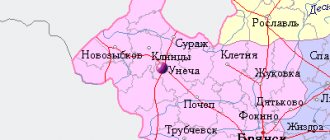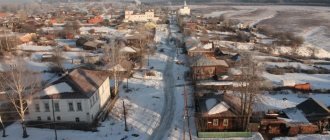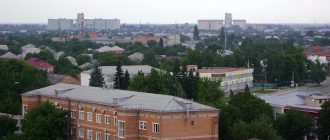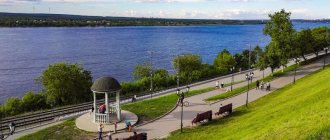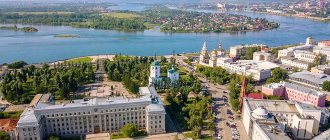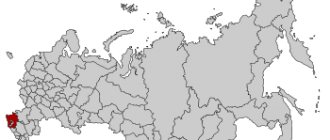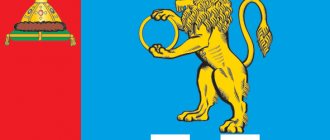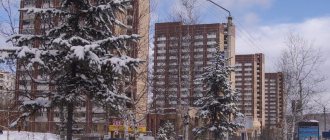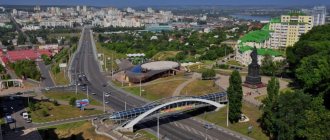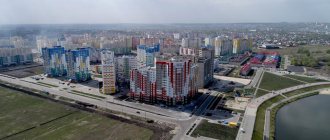The migration outflow from the Perm Territory in the first half of 2021 increased again. 35,847 residents of Prikamsk left the region, 33,509 people arrived. Most often, people move to the Krasnodar Territory (435 people), the Moscow Region and Moscow (324 and 251), and the Sverdlovsk Region.
“In January - May 2022, the most noticeable migration influx of population to the Perm region from the CIS countries was recorded from Tajikistan (689 people) and Armenia (351 people). In 2022, during the same period, 217 and 185 people arrived from these countries in the Kama region,” FAN in Permstat.
A Federal News Agency correspondent talked to Perm residents who left the Kama region at different times, found out their motives and how much they miss the region. And also with those who came to the Perm region.
Data by year
The first statistical calculations of the number of inhabitants were carried out at the beginning of the 19th century. According to information for 1811, 3,100 people lived in Perm. As local industry and trade develop, this figure increases significantly. In 1863 there were already 19,200 inhabitants, in 1897 45,205, and in 1913 - 68,100. After the October Revolution, the population grew almost as quickly. In 1926, 126,100 residents lived in Perm, in 1939 - 255,236, in 1956 - 538,000. Gradually, the city was able to cross the million mark. In 1979 the number of inhabitants was 999,157, in 1982 - 1,028,000, in 1991 - 1,100,000.
During the period of socio-economic instability, there was a significant decline in the number of residents in this locality. As of 1992, the population was 1,099,000, in 1998 - 1,023,000, in 2005 - 989,500. Perm lost its status as a millionaire city. True, after a few years it was regained.
Since 2009, there has been a steady increase in the number of people living in Perm. This year it amounted to 985,794 people, in 2012 - 1,000,672, in 2022 - 1,053,938.
The most famous actors of Perm
Svetlana Yurievna Permyakova
Svetlana Yuryevna Permyakova (born in 1972, Perm) – actress. She was remembered by the audience as a member of the KVN team “Parma” in the role of vocational school student Svetka.
After KVN, a career began in Moscow. Svetlana Yuryevna began to host various radio and television programs. Maximum fame came with the role of the head nurse in the series “Interns”.
Nikolai Alexandrovich Naumov
Nikolai Aleksandrovich Naumov (born in 1982, Perm) – actor. He also became famous thanks to the game KVN (member of the KVN teams “Parma” and “Friends”).
Real fame came after the series “Real Boys”, in which Nikolai Alexandrovich played the role of Kolyan Naumov. After such a stunning success, Nikolai Alexandrovich’s filmography began to be replenished with new projects.
City `s history
The territory of Perm has been inhabited since prehistoric times. Scientists have identified and studied 130 archaeological monuments (settlements and burial grounds), the time range of which is from the Paleolithic to the late Middle Ages (XIV-XV centuries).
The founding date of Perm in science is considered to be the day the construction of the Yegoshikha plant began. It was started on May 4, 1723 according to the old style. On November 16, 1780, a personal decree of Empress Catherine II was issued, according to which the plant was transformed into the city of Perm. Administrative buildings for government institutions were hastily built on the factory land, and construction of roads began - the famous Siberian and Kazan highways. Finally, on October 18, 1781, the grand opening of the city and the local governorship took place. In 1796, a new significant event occurred. The Perm governorship was liquidated, and a corresponding province was formed in its place.
During the 19th century there was active development of industry and transport. In 1871, the Perm Cannon Factory was founded in the village of Motovilikha. In 1876, the first open-hearth furnace was launched there. This enterprise was engaged in the production of artillery for the Russian army and played a huge role in local and national history. It was at this plant that a significant share of Soviet artillery was produced during the Great Patriotic War. Today it is the main manufacturer of artillery pieces for the Russian armed forces.
In 1878, the Perm-Kushva-Ekaterinburg railway line was completed. In 1897-1898, a railway line to Kotlas was built, connecting the city with the ports of the Northern Dvina.
After the October Revolution and the subsequent civil war, the city's rapid socio-economic development continued. On November 3, 1927, the city was united with the workers' village of Motovilikha. In 1930, construction began on plant No. 19, which later began to bear the name of Stalin and then Sverdlov. Now it is called the Perm Engine-Building Complex. It produces aircraft and rocket engines, equipment for gas pumping power plants.
During the years of industrialization, the number of city residents triples. In 1940, the city received the name Molotov, in honor of one of the prominent Soviet leaders, Vyacheslav Mikhailovich Molotov. The old name was returned only on October 2, 1957. During the Great Patriotic War, the city was the most important center of the Soviet military industry. Artillery pieces, ammunition, and aircraft engines were produced here.
After the Great Patriotic War, the development of Perm continued to surge. New microdistricts are being actively built with modern houses. On January 23, 1971, a significant event took place - the awarding of the Order of Lenin for success in implementing the five-year plan. The 90s were characterized in Perm, as throughout the country, by extreme economic instability. Recently, negative trends have been partially overcome. Active improvement of the city, construction of housing, transport and social facilities continues.
Geographical parameters
Although the city is called a “distant land,” it is not located at the end of the world. The coordinates of Perm are 58°00′ north latitude and 56°19′ east longitude. The time valid within a populated area is called the Yekaterinburg time zone. Perm (the time zone, in fact, is the reason for this) rises two hours earlier than the capital. But on the territory of the Russian Federation, maternity time is in force. So Perm is only one hour ahead of the capital. The time zone relative to Greenwich is shifted by five hours - according to winter time and by six - according to summer time.
National composition
The ethnic composition of the population of Perm was last calculated in 2010 during the All-Russian Population Census. Then the number of residents was 991,162 people, of which 907,955 people indicated information about their nationality. Among those who indicated their nationality:
- 823,333 people called themselves Russian. (88%).
- Tatars 34253 people. (4%).
- Bashkirs 7729 people. (1%).
- Komi-Permyaks 7301 people. (1%).
- Ukrainians 6507 people. (2%).
Ordzhonikidze district
The Ordzhonikidze district is quite large, as it makes up almost a quarter of the city. In total, there are eleven microdistricts on the territory of this administrative unit. Most of them are private houses. This is due to the fact that this part of Perm is an industrial zone. Enterprises such as Kamskaya HPP, NPO Iskra, Uralhydrostal, and Kamkabel are located here. But despite all the production power of the Ordzhonikidze district, it remains relatively environmentally friendly. This is facilitated by the presence of many gardening associations and parks on its territory.
Marriages and divorces
Marriage statistics in the Perm region in recent years are as follows:
- In 2022, there were 19,321 marriages and 11,156 divorces.
- In 2022, there were 16,449 marriages and 10,715 divorces.
- In 2022, there were 16,827 marriages and 11,011 divorces.
The ratio of marriages and divorces is not changing for the better. If in 2022 there were 577 divorces per 100 marriages, then in 2022 there are already 654.
Urban layout
At the moment, not only the districts of Perm are components of the city. These are also three settlements and one workers’ settlement.
The city has many squares, alleys and streets. By the way, interestingly, in the old days the streets located along the Kama River certainly led to temples. It is not surprising that they have the following names: Petropavlovskaya, Pokrovskaya and Monastyrskaya. But those streets that were located perpendicular to the reservoir were named according to the names of the district centers of the vast province.
In general, Governor K. F. Moderach had a great influence on the architecture in the locality. It was this man who formed the principles of urban planning in Perm. The structure of the power's supporting edge is similar to New York. His idea implied the formation of wide avenues and meridional streets perpendicular to them. Particular attention was paid not only to beauty and convenience, but also to safety. To ensure this, houses were not built close together.
Now the city is growing not in breadth, but in height. After perestroika, many new interesting structures appeared in the settlement. Time flies inexorably in Perm and turns the city into a modern metropolis with many presentable buildings.
Fertility and mortality
The demographic situation developing in the territory of Perm and the Perm region is characterized by an excess of mortality over the birth rate. According to data from 2022, 23,933 babies were born in the cities of the region. 25,662 people died. In 2022, the situation became worse - 22,148 were born, 26,040 died. In 2022 and 2022, this negative demographic trend continues. Only government policies aimed at supporting fertility and families can reverse it.
Create conditions
One of the important elements in the “fight” against migration of young people from the region is education and the opportunity to get a decent job after graduating from university.
vk.com / Perm State University
Perm University (PGNIU) is a classic university that unites representatives of all main areas of science - 12 faculties, 128 areas and 177 laboratories, four of which are world-class. Among 48 Russian universities, Perm State National Research University was included in the Quacquarelli Symonds ranking of the best educational institutions in the world, and it is also among the top 100 in the aggregated national ranking of universities.
“The summer school with the University of Oxford is unique for Russia. We are the only university that has been implementing such a program since 2012. These efforts have been highly appreciated by our partners in the UK. We are the only university that has a special distinction - the gold standard for internships,” the university told FAN.
Today, Perm State National Research University cooperates with leading companies in the Kama region that provide internships for students and are interested in hiring graduates. The university has currently concluded 214 agreements and cooperation agreements (67 with foreign organizations) and more than 900 agreements on internships and internships for students. Among the partner companies are Lukoil, PNPPC, Uralkali, ER-Telecom Holding.
“A unique NTI Photonics Competence Center has been created on the basis of Perm State National Research University. Now he is attracting the best Russian specialists in this end-to-end technology. The presence of such infrastructure opens up enormous opportunities for students and university staff. The developments of university scientists are translated into production and market products. We are also a key participant in the federal project of the world-class Scientific and Educational Center “Rational Subsoil Use,” the university clarified.
The campus of Perm State National Research University itself takes on the outlines of a small European town. On the territory there are 13 educational buildings, a square with a fountain, a Botanical Garden, eight museums, reading rooms, a sports club and its own palace of culture.
Migration
We have to admit that the population growth in Perm is due to migration growth due to the movement of residents of rural settlements and small towns to this city. The general operational situation in the Perm region for 9 months of 2022 shows the number of arriving people is 28,915, and the number of leaving is 30,915. Thus, there is a migration loss of 2,000 people.
Despite the population growth in Perm, there is a rather negative demographic situation. It can be overcome only after a radical improvement in the economic situation in the country.
Famous Perm writers
Pavel Petrovich Bazhov
Pavel Petrovich Bazhov (1879-1950) - children's writer, folklorist. Pavel Petrovich is known, first of all, for the Ural tales included in the collection “The Malachite Box”. Some of the tales were invented by Pavel Petrovich independently, some were literary adaptations of Ural folklore.
The most famous tales: “The Mistress of the Copper Mountain” and “The Stone Flower”. Based on these tales, animated films were made and many performances were staged.
Lev Ivanovich Davydychev
Lev Ivanovich Davydychev (1927-1988) - children's writer. The most famous works of Lev Ivanovich: “The difficult life, full of hardships and dangers, of Ivan Semenov, a second-grader and second-year student” and “Lelishna from the third entrance.”
The works of Lev Ivanovich describe the life's ups and downs of the main characters, which they bravely cope with, including with humor. The philosophy of the works is relevant for both today's children and adults.
Lev Ivanovich Kuzmin
Lev Ivanovich Kuzmin (1928-2000) - children's writer, poet. Lev Ivanovich began writing when he was already an adult, but despite this he wrote as simply, clearly and excitingly as if he were a child. During his life he wrote more than 80 books.
His most famous work is “Captain Coco and the Green Glass,” and his best children's poem is “Stargazer.”
Alexey Viktorovich Ivanov
Alexey Viktorovich Ivanov (born in 1969, Gorky) - writer, screenwriter. The most famous works: “The Heart of Parma”, “The Ridge of Russia” and “The Geographer Drank the Globe Away”. Based on the novel “The Geographer Drank His Globe Away,” a feature film was made in 2013, which received the Nika Award as the best film of the year.
Also together with Leonid Parfenov in 2008-2009. A documentary film called “The Ridge of Russia” was shot, which is dedicated to the nature, culture, and history of the Urals. The official website of the writer (https://ivanproduction.ru/), where you can ask questions to the writer and learn about new works.
Economic development
Developed mining sector and heavy industries feed Perm. The city's industry is represented by great diversity.
A powerful industrial complex was formed here during the Second World War. It was this region that received refugees. And then not only the population, but also enterprises were evacuated. The entire production sector worked in the rear not only for the needs of the army, but also for the state as a whole. After the end of the Great Patriotic War, several enterprises were built on the territory of the city - the Kama hydroelectric power station and an oil refinery.
This specificity of the manufacturing sector was influenced by the mining industry. And there is something to get. The wealth of raw materials is simply amazing - both in quantity and uniqueness. Among the natural resources that distinguish the Perm region (Perm), one can note iron ores, coal, potassium salts, non-ferrous metal ores, gold, platinum, and diamonds.
All this abundance formed a powerful industrial sector. Among all industries, the most developed enterprises are the following industries:
- metallurgy and mechanical engineering (the defense sector is widely represented by industrial facilities);
- energy (there are five stations in the city - four heat and one hydro);
- petrochemical;
- woodworking;
- food
Such powerful industrial development is influenced not only by the availability of sufficient natural resources, but also by the attention of the authorities. The latter actively support scientific developments in the manufacturing sector. Perhaps this helps Perm enterprises always stay on top.
There is also a developed network of research institutes and laboratories in the city. The natural resources that characterize the Perm region (Perm) are actively studied there. Based on the results obtained, new materials, designs and technologies are subsequently developed.
Industrial district
This area opens up Perm airspace. There are two airports here - Barakharevsky and Bolshoye Savino. From the name of this administrative unit it is clear that there are industrial facilities here too. These include Mineral Fertilizers, Lukoil, Sibur-Khimprom, Spetsneftetrans. There is no access to the main reservoir - the Kama, but it has its own river Mulyanka. The area of Perm occupied by this region is ten percent. In total, the city occupies almost eight hundred square kilometers, being fourth in the list of Russian cities by area. The only cities with more populated areas are Moscow and St. Petersburg, as well as Volgograd.
Sverdlovsk district
This part of the city is home to the largest number of Perm residents - about two hundred thousand. This is the largest administrative unit within the city. Since the entire area of the Sverdlovsk region is densely populated, it is quite rare to see green islands here.
The main transport artery of Perm, popularly called Kompros, runs through this area. Komsomolsky Prospekt conditionally divides the settlement into two parts - western and eastern.
This area is also not spared from the manufacturing sector. The main industrial giant in this part of the city is Perm Motors OJSC. On the territory of this administrative unit there are enterprises in the aviation, mechanical engineering and food industries.
